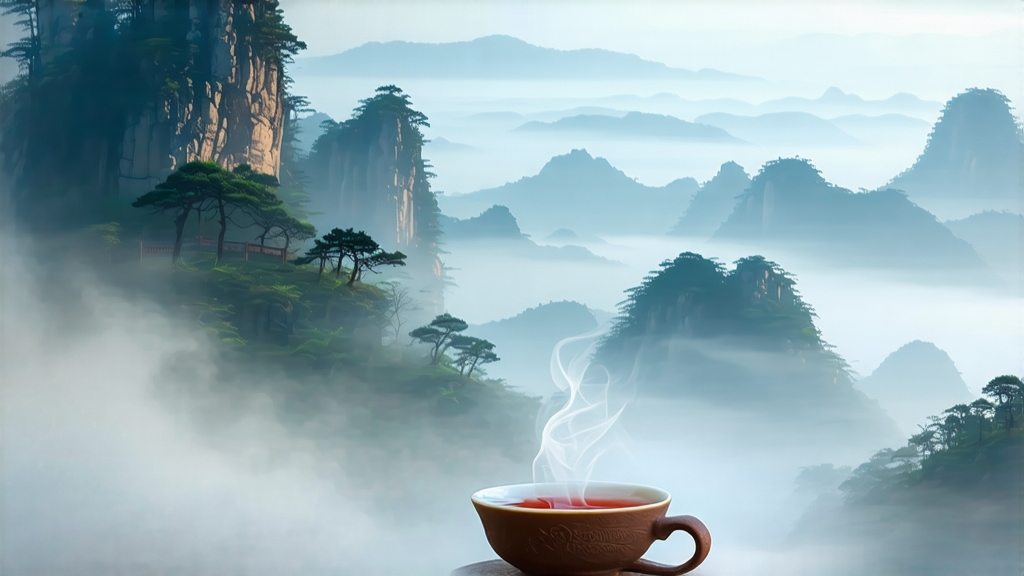
Ask most tea lovers to name a Chinese black tea and they will answer Keemun or perhaps Dian Hong; few realize that the very first black tea ever created was Lapsang Souchong, born in the cool, bamboo-clad gorges of the Wuyi Mountains in northern Fujian. Its Chinese name, Zheng Shan Xiao Zhong, literally means “fine mountain small leaf,” a humble phrase that conceals a 400-year saga of military urgency, Dutch merchants, imperial banquets and, above all, the seductive perfume of smoldering pine.
1. Historical backdrop
Local legend places the birth year around 1568, late Ming dynasty, when a passing army commandeered Tongmu village and forced tea farmers to abandon their freshly picked leaves. To save the crop, the farmers hastily dried the leaves over open pinewood fires once the soldiers left. The resulting dark, smoky tea was initially regarded as a failure—until Dutch traders on the nearby Amoy (Xiamen) docks tasted it and declared it extraordinary. By 1604 the first chests reached Europe, where it fetched prices higher than silver and inspired the English word “bohea,” a corruption of “Wuyi.” When the British later transplanted tea bushes to India and Sri Lanka, they carried Lapsang Souchong cuttings; every modern black tea, therefore, carries a whisper of that pine-scented ancestor.
2. Terroir and cultivar
Authentic Lapsang Souchong can only be produced within the 600-m² core zone of Wuyi’s national nature reserve, a UNESCO dual heritage site whose mineral-rich, yellow-red soil is laced with weathered tuff and granite. The area’s signature fog, created by the gorge’s river systems, filters sunlight into a soft, diffused glow ideal for slow amino-acid accumulation. The cultivar is a local landrace called Cai Cha, a “small-leaf” varietal whose narrow, serrated blades contain more geraniol and less catechin than the larger-leaf Assamica types, explaining the tea’s natural honeyed sweetness beneath the smoke.
3. Two stylistic branches
Today the market offers two distinct versions:
- Traditional pine-smoke Lapsang: leaves wither over local Masson pine fires, roll gently, oxidize fully, then are pan-fired and re-smoked in bamboo baskets suspended above resin-rich pinewood embers. The finished tea is glossy black with golden tips, releasing a fragrance reminiscent of campfire, dried longan and frankincense.
- Unsmoked “wild” Lapsang (also sold as Zheng Shan Xiao Zhong Original): same terroir and cultivar, but the leaves are dried with only hot air and charcoal, yielding a malt-rich, cocoa-laden cup that showcases the raw mineral character of Tongmu without the smoke mask. Purists drink the unsmoked version to judge the skill of the farmer, then graduate to the smoky expression for sensory nostalgia.
4. Craftsmanship in detail
Picking occurs only between Qingming and Grain Rain, when two leaves and a bud measure 2.5–3 cm. The leaves are laid on bamboo mats inside dimly lit wooden lofts where pinewood is burned beneath slatted floors; temperature is kept at 28–30 °C so that the smoke, not the heat, drives off moisture. After 8–10 hours the leaves lose 60 % of their weight, becoming supple enough to roll. Rolling is brief—just 20 min—to preserve tip integrity. Oxidation happens in cedar-lined boxes at 24 °C and 85 % humidity; the leaves turn mahogany, releasing a raisin-like aroma. The final smoking uses 40-year-old pine roots, whose resin concentration is highest; the roots smolder at 80 °C for 3–4 hours while the master turns the baskets every 15 min to ensure even absorption. A finished kilo requires 4.5 kg of fresh leaves and 2 kg of pine root, explaining the tea’s price premium.
5. Brewing techniques
Because smoke can overpower, water quality is crucial: use spring water at 90 °C, not boiling, to soften tannins. For gongfu style, employ a 120 ml zisha teapot